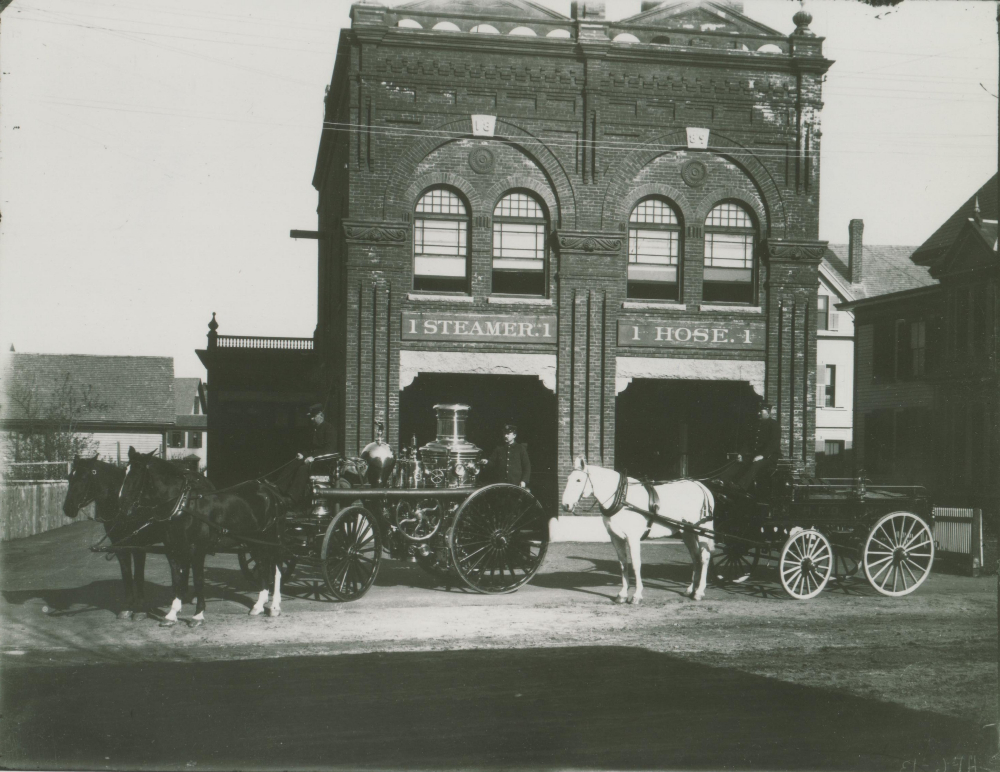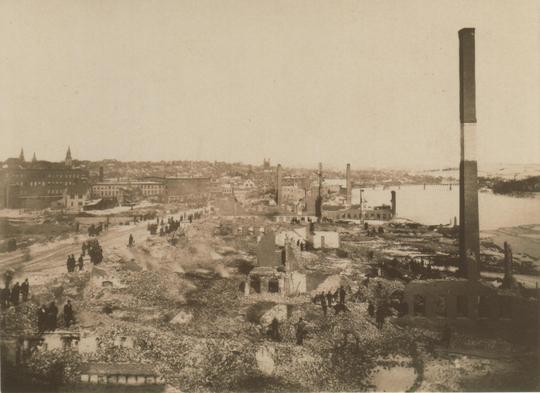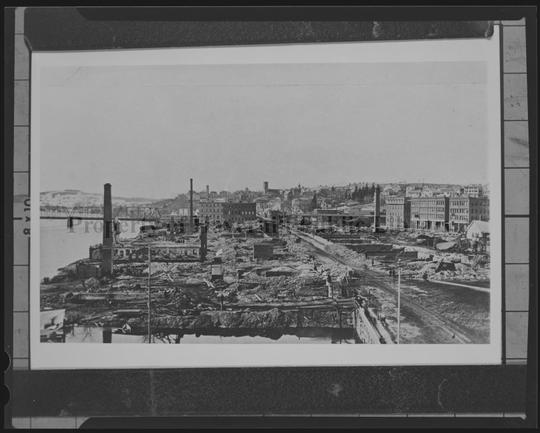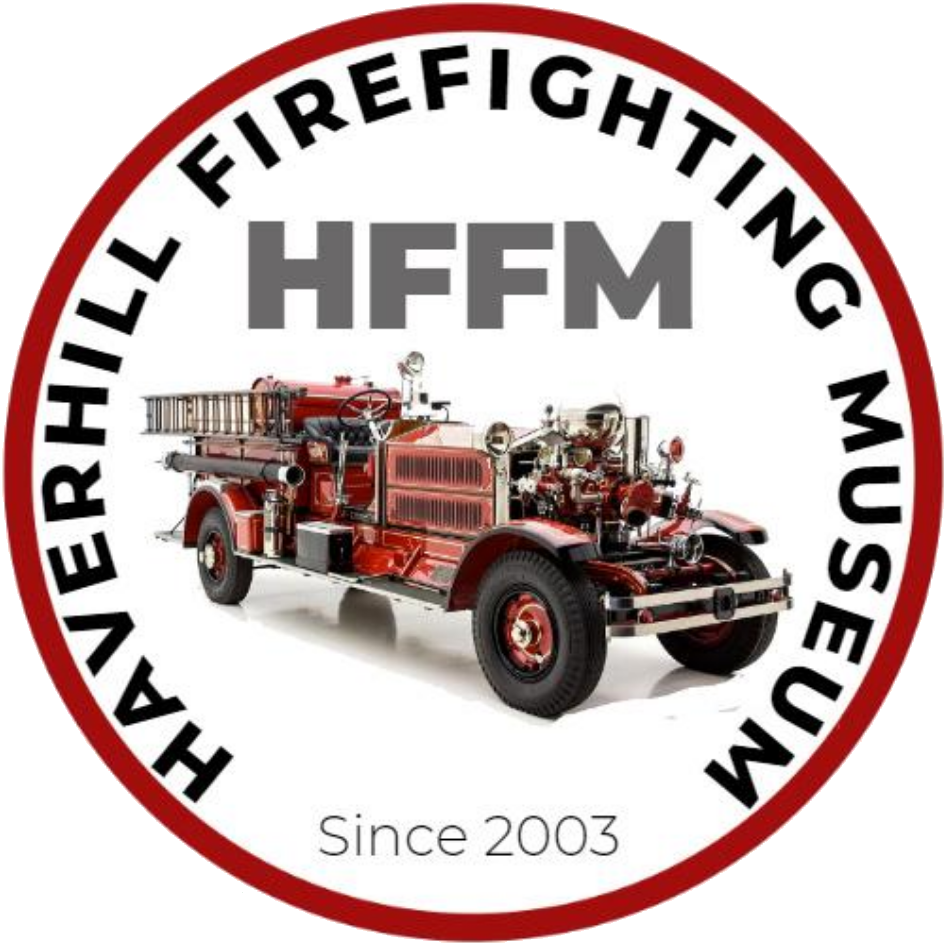Our Firefighting History
The first horses used by the Haverhill fire department was in 1872. A pair of bays, driven by Abraham Champion, was used to draw the steam fire engine “General Grant,” and a pair of grays, driven by C. W. Foster, was used to draw the steam fire engine “City of Haverhill.”
The drivers, Mr. A. Champion and Mr. C. W. Foster, were the first permanent men in Haverhill’s fire department. When the alarm sounded, the stable doors would fly open, the trained horses would come running out and stand in place, and the men would lock the collar and jump on the wagon. In taking up the reins, the men would unhook the apparatus which held the harness in place, and it would fly up to the roof. In practically no time, the rig was rushing down the street to a fire.
Fifty years after the introduction of horses into Haverhill’s fire service, the department would be completely motorized. The last pair of horses being retired from the fire service on October 1, 1922.

HAVERHILL’S FIRST RECORDED FIRE 1671
The first fire recorded in Haverhill’s annals, in 1671, completely destroyed the Matthias Button homestead, a thatched roof house near the Edward Bricket mansion on Pond Street (present-day Kenoza Avenue).
HAVERHILL’S NEED FOR AN ORGANIZED RESPONSE TO FIRES
1697-1708
During the early years of the 18th century, many of Haverhill’s fires were reportedly set by "marauding Indians," urged on by the French in Canada. On at least two occasions--one on March 15, 1697 and another on August 29, 1708--the Indians massacred settlers, took others captive, and torched their homesteads. These incidents, and others, demonstrated Haverhill’s need for an organized response to fires as well as Indians.

THE DISASTROUS FIRE OF 1775
On Sunday afternoon, April 16, 1775, a disastrous blaze swept down the west side of Haverhill’s Main street from Court street to Merrimack street at White's corner. Before the flames had been finally checked at nightfall, seventeen buildings in all had been destroyed. It was obvious that one engine would not hold back the ravages of such a fire. Among the principal structures lost were a large brick tavern of John White, the stores of Joseph Dodge and James Duncan, a distillery, and several residences
HANDTUBS SUPPLIED WATER BY BUCKET BRIGADE
1847
On New Years day, 1847, the first parish meeting house (Unitarian church), located on the Common, caught fire. The flames had gained much headway before the handtubs arrived. The roads were in bad condition and "Veto," the Bradford East Parish engine, arrived at the fire too late to be of any service.
The Haverhill handtubs were supplied water from the river by a bucket brigade made up of men, women, and children. Despite their heroic efforts, they were unable to save the edifice, which had been erected only ten years earlier. The fire caused twelve thousand dollars damage, including the loss of a fine organ and the town clock. The Haverhill firefighters thanked and complimented the Bradford company for responding so quickly to the alarm. The handtub "Veto" and company were returned home to East Bradford on a horse sled by Haverhill’s Chief Engineer; Rufus Slocomb, they crossed the river on the ice at chain ferry, which was owned and operated at the time by George Mitchell, Sr.
Later that year, the Stage street stables burned; the same method of obtaining water was used, with similar results. This time, however, the flames were prevented from spreading to adjacent buildings.

Bradfords "Franklin" Handtub 1855
In 1855, an independent engine company in West Bradford was formed. It purchased a new first-class handtub from the William Jeffers company In Pawtucket, Rhode Island, for $1200 and christened it the "Franklin." The "Franklin" responded to its first alarm of fire on the morning of February 20, 1856. The fire, in Haverhill, involved a building and an adjoining stable on Fleet street. While Haverhill engines pumped water from the river, the "Franklin" connected to the town pump, opposite town hall, and played through Court street, saving the stable. See Table G in the appendix for Bradford’s original list of Franklin engine company members.
The Oliver Roberts Fire 1860
On the afternoon of August 7, 1860, a serious fire totally destroyed many wooden buildings, and badly damaged or greatly endangered numerous others, in the Washington Square area. It was the town of Haverhill’s most destructive fire since April 16, 1775.
The fire started shortly after three o'clock in a barn owned by Oliver H. Roberts and his brother Stephen, in the rear of their homes on the corner of Washington and Essex streets. The barn contained, among other things, more than ten tons of hay recently stored there. The blaze was so intense that in minutes the barn was fully involved. The fire, fanned by high winds, spread quickly in a westerly direction completely destroying another barn owned by Stephen Roberts and badly damaging Oliver Roberts' house on Washington street and Stephen Roberts' house on Essex street. Firemen found it necessary to completely flood Stephen Roberts' house in order to extinguish the flames, causing extensive water damage.
The fire then spread to a small shop, then north to a one-and-a-half story house, both in the rear of Essex street and belonging to the Farnham Plummer estate. It then spread to a large duplex house belonging to Mrs. S. Hale and J. J. Marsh, esq.All three buildings were totally destroyed. A house belonging to Charlotte Pettingell and William Goss, on the easterly side of Essex street, was in imminent danger and was only saved because citizens passed water to the roof of the house by means of a ladder.
The "Torrent" hand engine No.2, usually housed at the Essex street fire station, would have had the fastest response time due to the stations proximity to the fire area; unfortunately, the "Torrent was unable to respond because it was at the Hunneman & Company in Boston, being repaired and overhauled due to damage it had sustained in a Bradford fire four months earlier. Those companies that did respond were the "G .W. Lee" hand tub No.4 company, housed at the Court street fire station; the Zouave hook-and-ladder company, out of the Fleet street fire station; the "Tiger" double-deck hand tub No.1 company, housed at the Water street fire station; and the "Franklin" hand tub company, out of the Bradford station.
Haverhill’s first engine house was constructed on Water street in the summer of 1769 to house, the newly acquired hand-tub, the “Philadelphia.” The new engine house was a small structure, just large enough to hold the hand-tub. It remained in service until a more up-to-date station was built in 1842.
In 1842, Mr. Paul Fletcher purchased the old engine house and moved it to a location, close by on Water street, opposite Mill street. Mr. Fletcher used it as a shoe shop in the days when shoes were hand-pegged. The engine house remained on this spot until the flood of 1936 when the Merrimack River overflowed and moved it some distance from its second site. Due to its historical value the Haverhill Historical Society acquired and razed the structure with the intention of rebuilding it on the Society’s property. However, before the lumber of the razed structure could be removed, it was carried away in the flood of 1938.







